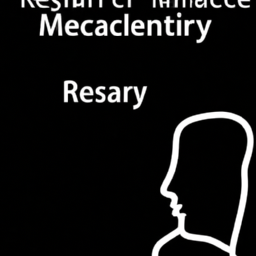The New Jersey Law Against Discrimination (LAD) and the federal Americans with Disabilities Act (ADA) have long provided protections for those with disabilities in the workplace. Although both laws prohibit disability and perceived disability discrimination, the LAD definition of “disability” is significantly broader than the ADA definition. As such, it is of utmost importance for Human Resources professionals to understand the difference between the two definitions and the implications of New Jersey’s recent court ruling on the matter.
The New Jersey Law Against Discrimination (LAD)
The LAD defines a disability as “any physical or mental impairment which substantially limits a major life activity,” as long as the impairment does not result from the employee’s own voluntary action. Under the LAD, the definition of “disability” includes any physical or mental impairment that “substantially limits” a major life activity. It also includes any condition that is considered “permanent” or “chronic,” even if the condition does not rise to the level of disability under the ADA.
The Americans with Disabilities Act (ADA)
The ADA defines a disability as “a physical or mental impairment that substantially limits one or more major life activities of such individual.” The ADA definition of disability is much narrower than the LAD definition. Under the ADA, an impairment must substantially limit one or more major life activities, such as hearing, seeing, walking, speaking, breathing, learning, and working. The ADA also requires that the impairment must have a “substantial” impact on a major life activity.
Court Imposes Limits on Definition of Disability
Recently, a New Jersey court ruled that an employer cannot use the LAD’s broad definition of disability to deny an employee’s claim of disability discrimination, if the employee’s impairment would not be considered a disability under the ADA. The court ruled that the LAD’s definition of disability must be interpreted in light of the ADA’s more restrictive definition.
The court’s decision has important implications for employers in New Jersey. Employers must now be aware that, even if an employee’s impairment meets the LAD’s broad definition of disability, the employer may still be found liable for disability discrimination if the employee’s impairment would not be considered a disability under the ADA.
Implications for HR Professionals
The recent court ruling in New Jersey highlights the importance of understanding the difference between the two definitions of disability. It is important for HR professionals to be aware of the implications of the ruling, and to recognize that even if an employee’s impairment meets the LAD’s broad definition of disability, the employer may still be found liable for disability discrimination if the employee’s impairment would not be considered a disability under the ADA.
It is also important for HR professionals to be aware of the legal implications of disability discrimination. Under the LAD, an employer may be held liable for disability discrimination if the employer takes an adverse action against an employee based on the employee’s disability or perceived disability. This means that if an employer takes an adverse action against an employee based on the employee’s impairment, even if the impairment is not considered a disability under the ADA, the employer may still be liable for disability discrimination.
Finally, it is important for HR professionals to be aware of their obligations under the LAD and the ADA. Employers must ensure that they are complying with the applicable laws and that they are taking all necessary steps to prevent disability discrimination in the workplace.
Conclusion
The recent court ruling in New Jersey highlights the importance of understanding the difference between the LAD’s broad definition of disability and the ADA’s more restrictive definition. It is important for HR professionals to be aware of the implications of the ruling, and to recognize that even if an employee’s impairment meets the LAD’s broad definition of disability, the employer may still be found liable for disability discrimination if the employee’s impairment would not be considered a disability under the ADA. Additionally, HR professionals must be aware of their obligations under the LAD and the ADA, and must take all necessary steps to prevent disability discrimination in the workplace.



